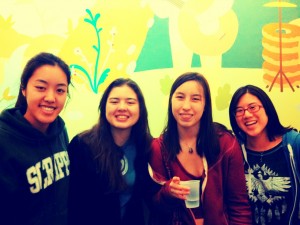Hi everyone. Thanks for continuing to follow my posts as I narrate my journey as a student participant in the Fullbridge Program.
Day six, we worked on a number of different assignments, including two expository videos. Each person worked individually, and all was quiet as usual. Since recording a video requires peace without interruption, we all took turns working in the open rooms upstairs meant for shared use. The finished products were to be submitted online to our coaches for review and feedback.
For the first video, I summarized a series of documents as an oratory for my boss. I wrote out the information first and memorized it from there. Other participants approached the task from various angles, some of whom spoke off the cuff. Others wrote short notes for themselves, much as someone might do with index cards for a presentation.
The second video required me to assess a possible workplace dilemma and propose a set of solutions to my supervisor. This assignment was shorter because it required less reading and time investment. As such, the information was less about research as it was about understanding work place etiquette. I found this one took less time and was easier to relay in terms of memorization and speech.
The idea was to simulate a work environment in which I would have to communicate with others via video, similar to the way people now use Skype and other similar programs for business purposes. After all, I’ve already had my first Skype interview because of Fullbridge, and it likely it won’t be my last. Given that technology has become essential to nearly every type of career, we have to consider the impact it will have on our future vocational plans.
As for you, do you find the advent of technology to be encouraging or not? How does technology play a role in the career in which you’re interested?




